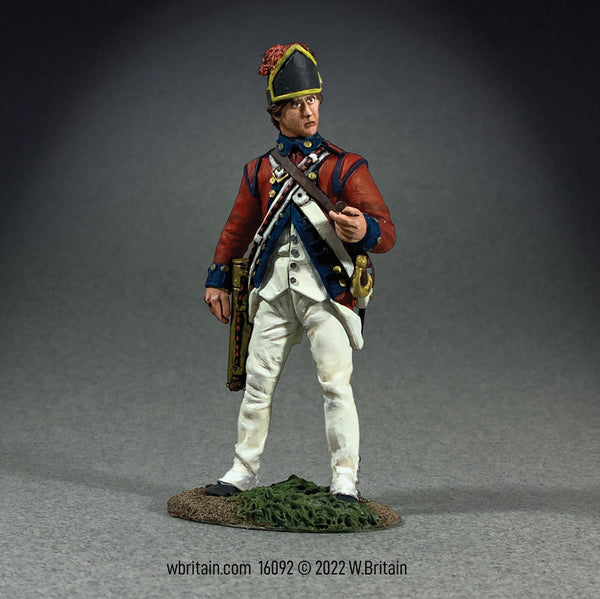- Continue Shopping
- Your Cart is Empty
16106 American Militiaman, 1775-83 Troiani Art of War
$ 48.00
The performance of the colonial militia stunned the military professionals of Great Britain in the early days of the American Revolution. These civilians-turned-soldiers, often had some previous service experience in various provincial regiments during the 15 or so years preceding the events that unfolded at Lexington Common, Concord Bridge, and Bunker Hill. Few of these militia organizations had any uniforms, standardized weapons, or equipment, but took a fearsome toll on the British regulars sent to suppress any thoughts of rebellion. When the tensions erupted into outright armed revolt, some of these men joined the newly raised state regiments or, later, Continental Line regiments, while some remained in local militia companies.
Related Items
16092 Art of War: Fifer, 2nd Continental Artillery
$ 48.00
Art of War: Fifer, 2nd Continental ArtilleryIn the 18th century, military field music acted as a melodic communication system that ordered the soldiers’ day and sent vital communications through the...
16105 American Militiaman, 1775-81
$ 48.00
From the beginning of European colonization of North America, communities along the Atlantic seaboard required able-bodied males to participate in the defense of their towns and colonies. These militia units...
16107 - Art of War: Major John Buttrick, Massachusetts Minuteman, 1775
$ 48.00
Art of War: Major John Buttrick, Massachusetts Minuteman, 1775 - Art of Don Troiani John Buttrick was in command of a company of minutemen, 19 April 1775. From his position...
16108 - Art of War: Black Militiaman of the Spartanburg, S.C. Militia
$ 48.00
Black Militiaman of the Spartanburg, S.C. Militia Spartanburg County, South Carolina bears a proud Revolutionary War heritage. The county has more Revolutionary War engagement sites than practically any other locale in...














